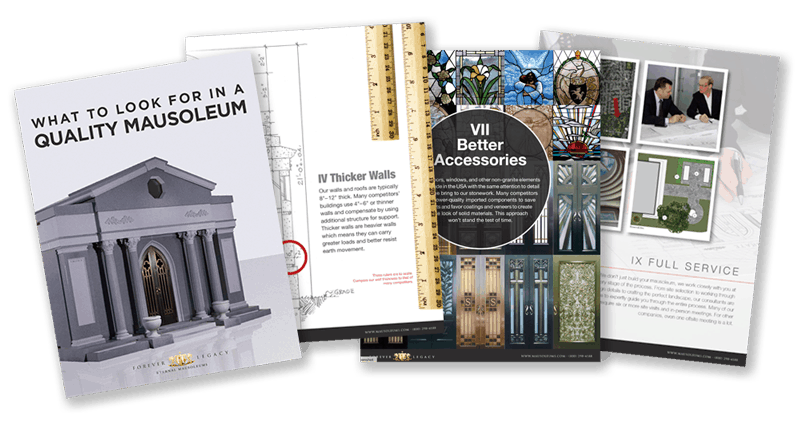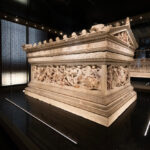Flood Mausoleum
Classical
The Flood mausoleum is a restrained, but elegant example of Beaux Arts symmetry in the form of a Greek temple. Twenty-eight ionic, polished granite columns support the intersecting cross-gables.
Although it is not documented, it is likely that Augustus J. Laver, who designed Flood’s Menlo Park estate, “Linden Towers” and his San Francisco mansion, also designed his mausoleum. Well heeled citizens like James Flood, frequently employed the same architect to design their private residences as well as their mausoleum.
Constructed in 1889, the Flood mausoleum was originally located in the Laurel Hill Cemetery in San Francisco. In 1905, the entire mausoleum, as well as Flood’s remains, were moved 10 miles south to Cypress Lawn Cemetery, in Colma. The mausoleum escaped the disastrous 1906 earthquake unharmed. It remains today, one of the most beautiful examples of funerary architecture in Cypress Lawn Memorial Park.
James Clair Flood (1826-1889), the son of Irish immigrant parents, arrived in California in 1849. He teamed up with a fellow Irishman, William O’Brien, and opened a saloon in San Francisco. The two men bought up Nevada mining claims from their saloon patrons. With some astute speculation, they soon found themselves in control of the vast Comstock Lode. Four years after quitting the saloon business Flood was earning more than $500,000 a month. Flood established the Nevada Bank in 1875, which after his death merged with the Wells Fargo Bank.
Text and photo © Douglas Keister Visit Doug’s Author Page
[address cemetery=”Cypress Lawn Memorial Park” street=”1370 El Camino Real” city=”Colma” state=”California” zip=”94014″]

